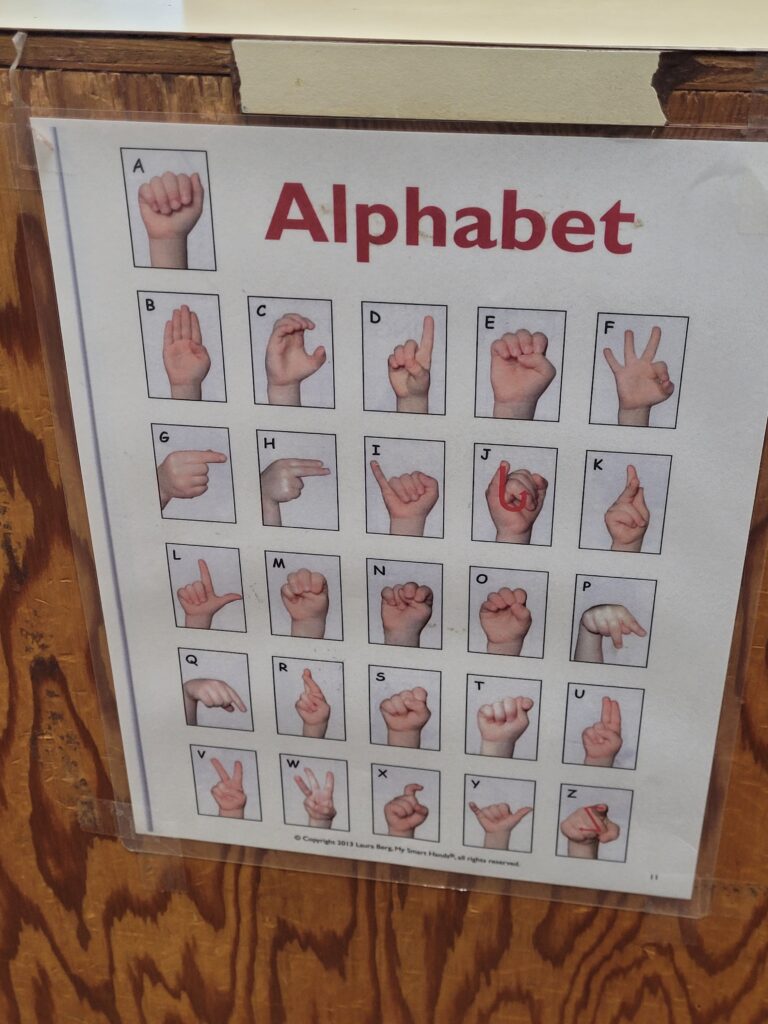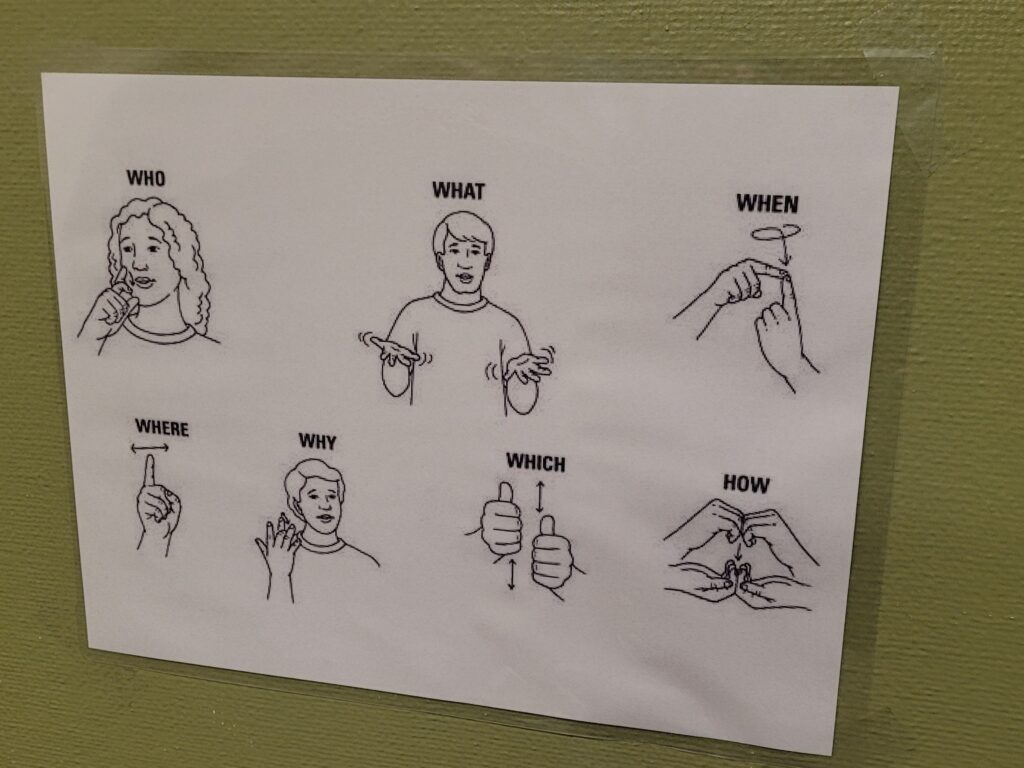In our classroom, we use sign language to communicate with K. K touches the faces of the other children to get their attention, but some of them don’t like it. To help them communicate better, the mentor educator has taught them some basic signs such as ‘stop’, ‘no’, ‘mother’, ‘father’, ‘grandfather’, and ‘grandmother’. One day, during lunchtime, they were practicing these words. The sign language alphabet and question words are posted on the wall, and the children are curious about them. They often try to practice using them.“Children use multiple modes of expressive languages to communicate ideas, participate in relationships, and make meaning in their homes and communities” (Early Learning Framework, p.66)

Two weeks ago, we celebrated the birthday of a three-year-old child. During the celebration, one of the children asked me to sing a song in French. I replied that I didn’t know any French songs, but I could sing in my native language. I sang a birthday song in Hindi, and then one of the educators sang a song in Persian. The children listened attentively and were fascinated by the different languages and cultures. Last week, the Indigenous Liaison Support joined us and sang a song in the Secwepemc language with drums. Introducing different languages and cultures is an excellent way to promote diversity and create inclusive childcare spaces in the early years.

Leave a Reply